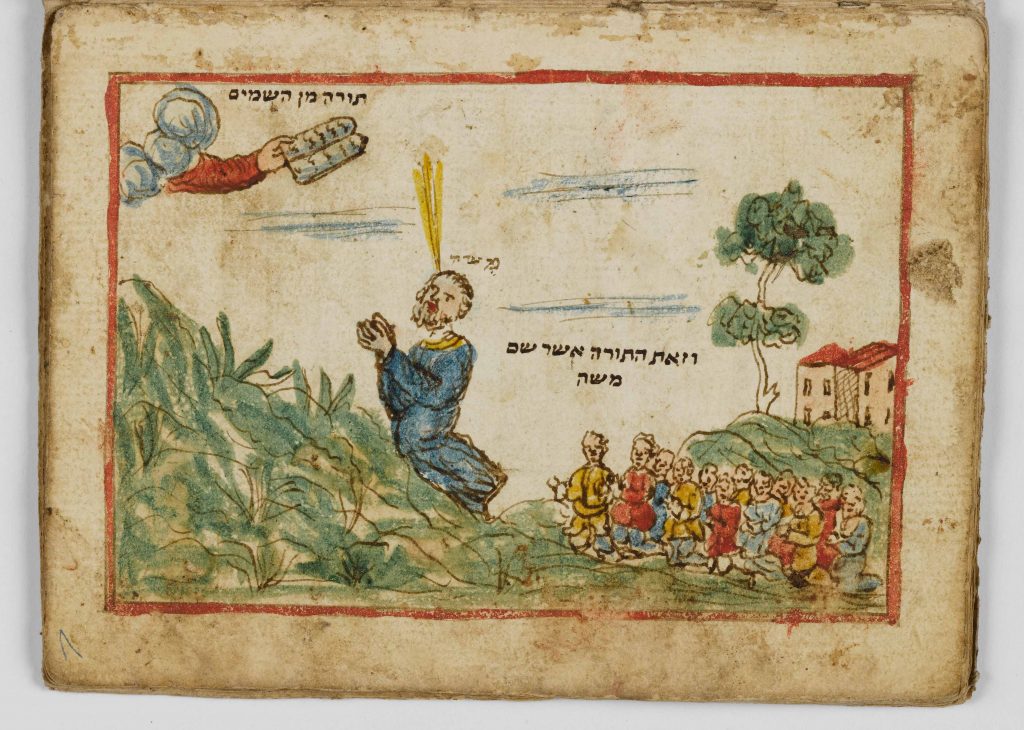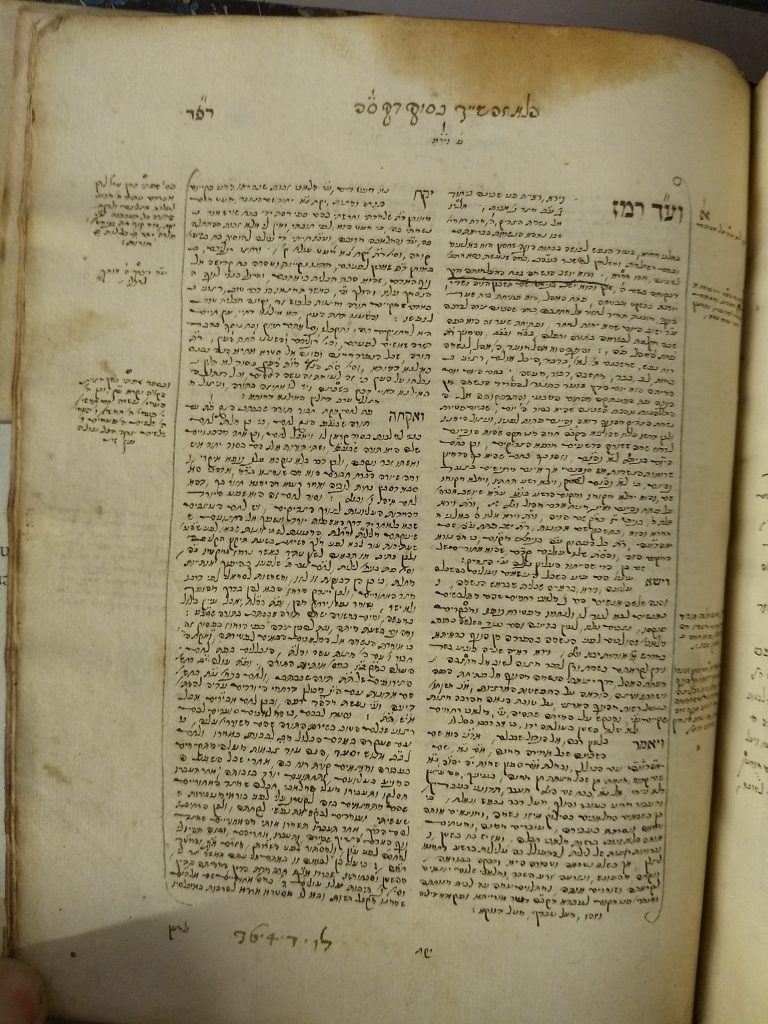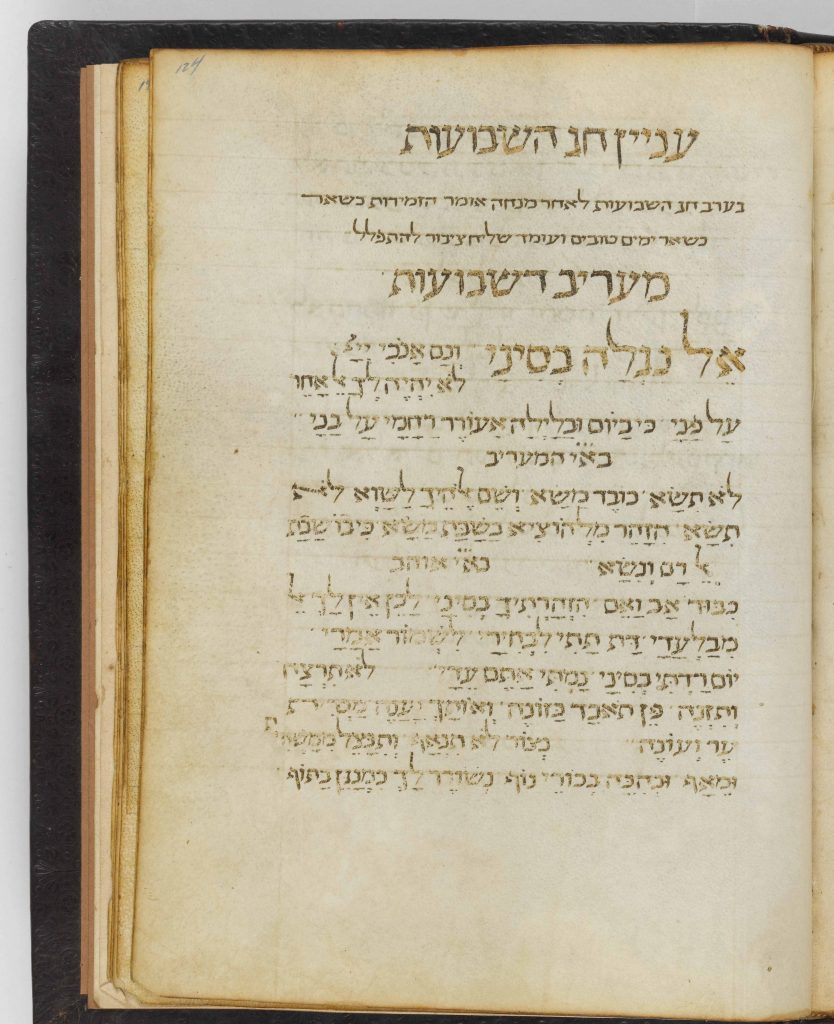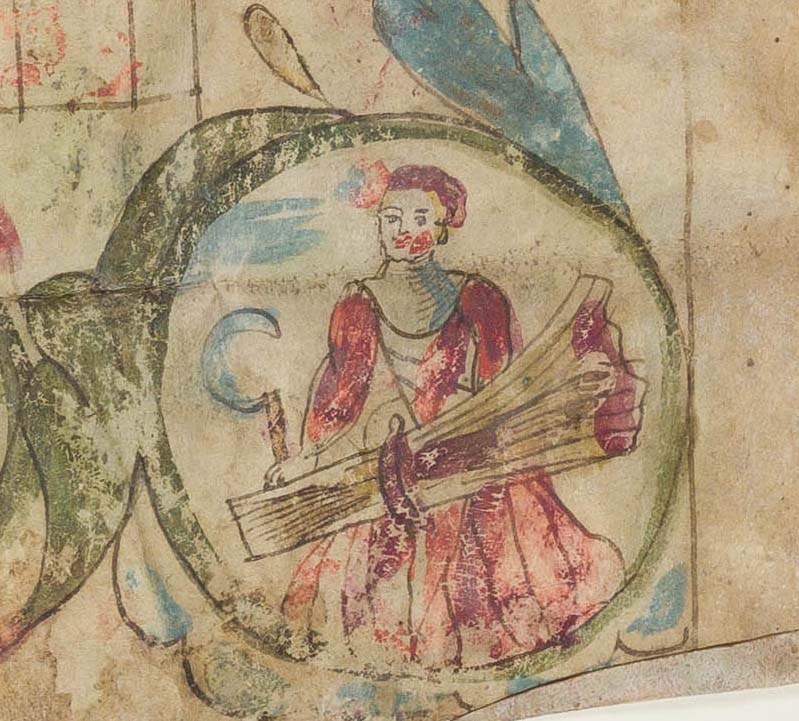
The holiday of Shavu’ot is one of the lesser known holidays in the Jewish calendar. It doesn’t involve obvious rituals, like eating flat crackers for a week, living in a hut in the backyard, blowing a ram’s horn, or fasting. Shavu’ot celebrates the giving of the Torah to the Israelites at Mount Sinai, and is celebrated by Torah study and scholarship (among other things). There is a common custom to stay up all night studying Torah (and its myriad commentaries).
There are many prayerbooks in our collection that are specific to Shavu’ot, and include selections of various parts of the Jewish canon, including the Hebrew Bible, the Mishna, and the Talmud. The image above is taken from an illustrated volume of special prayers recited in the seven weeks between Passover and Shavu’ot. It has been entirely digitized and is available online.
Because of the custom to stay up all night studying the sacred texts, various books were written specifically for the night of Shavu’ot. The tiny text in the book on the right (magnified below, although still quite small) is the Tikun Lel Shavu’ot. Its text is essentially an abridged version of the entire Jewish canon, including the first and last line of every section of the Hebrew Bible and the Mishna, as well as additional kabbalistic texts. The word “tikun” means “reparation,” and according to mystical lore, reading this text on the night of Shavu’ot is an atonement for the Israelites sleeping late on the morning when Moses came down with the Tablets at Sinai. 
Another example of a book for Shavu’ot was the Azharot Le-Shavu’ot, which we have in many copies and formats. The Azharot contain a poetic version of the 613 commandments, meant to be recited on Shavu’ot. One particularly interesting Azharot, from Carpentras, in France,  includes a story about “the miracle that occurred…when the Carpentras Jewish community was saved from harm after a troop of armed men entered within the walls. A special Purim was celebrated in Carpentras each [year] to commemorate this episode of 1512.” Another Azharot in our collection is written in a Ladino (Judeo-Spanish) version.
includes a story about “the miracle that occurred…when the Carpentras Jewish community was saved from harm after a troop of armed men entered within the walls. A special Purim was celebrated in Carpentras each [year] to commemorate this episode of 1512.” Another Azharot in our collection is written in a Ladino (Judeo-Spanish) version.
As with many prayers, however, the special liturgy for Shavu’ot is often included in broader Mahazorim (prayerbooks) for special days throughout the year. On the left is a Southern Italian Mahazor from the 15th century, open to the beginning of the section for Shavu’ot. (This manuscript has been digitized in its entirety, and is available online.)
The Biblical book of Ruth is read during the morning service on Shavu’ot for various reasons. Her conversion to and acceptance of Judaism is a parallel to the Israelites’ initial  acceptance of the Torah at Sinai. Additionally, her grandson, King David, was born and died on Shavu’ot. Because Ruth’s collection of wheat from Boaz’s field ultimately led to her marriage, an image of Ruth with wheat is sometimes pictured on marriage contracts (ketubbot), like this one from Corfu, 1782. (A digitized image of the entire ketubbah can be seen here)
acceptance of the Torah at Sinai. Additionally, her grandson, King David, was born and died on Shavu’ot. Because Ruth’s collection of wheat from Boaz’s field ultimately led to her marriage, an image of Ruth with wheat is sometimes pictured on marriage contracts (ketubbot), like this one from Corfu, 1782. (A digitized image of the entire ketubbah can be seen here)